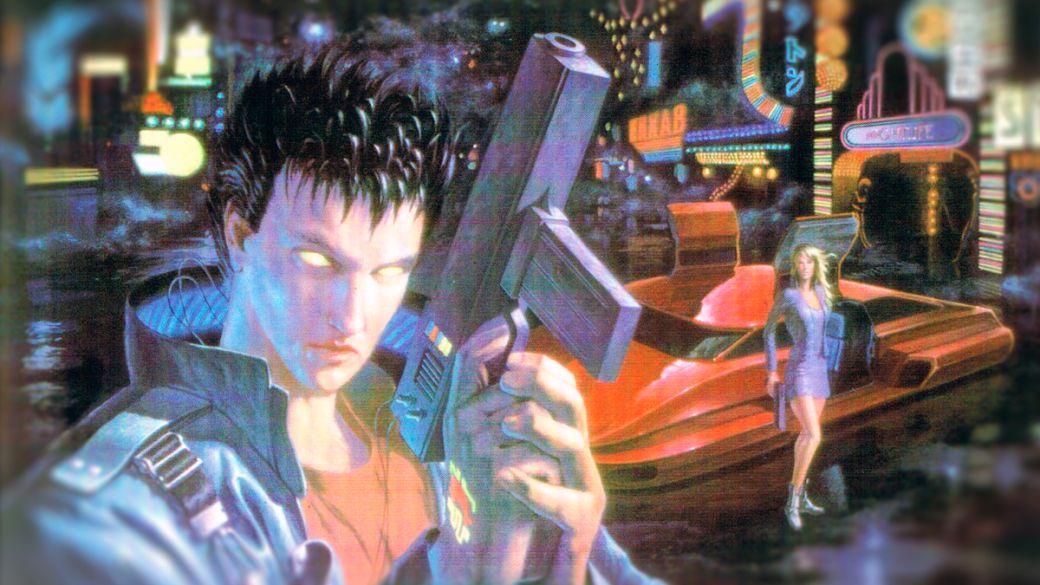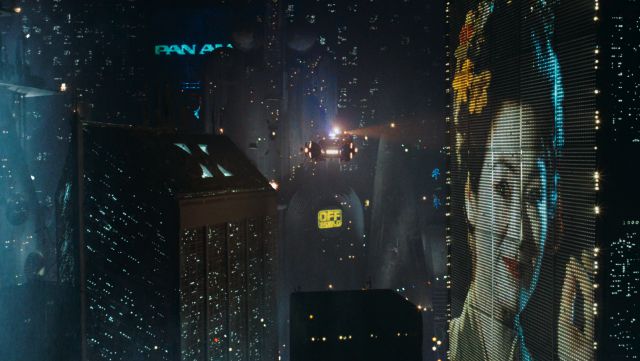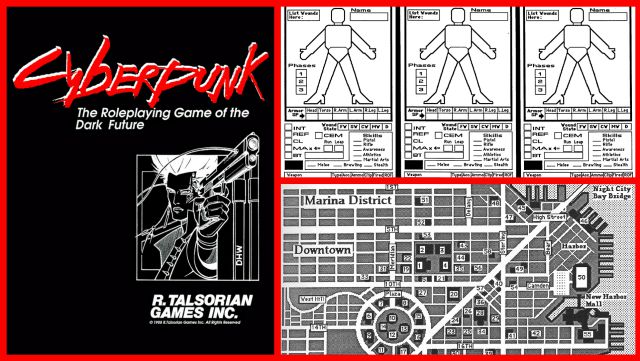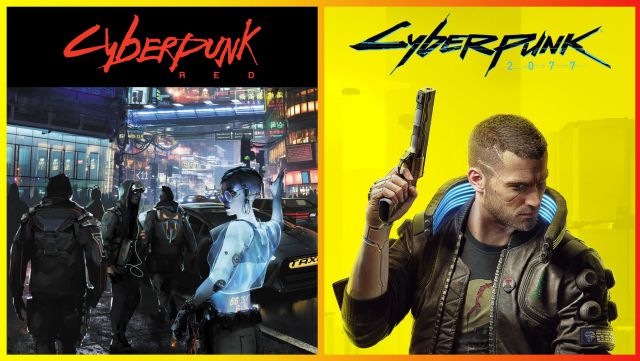
A week after the release of CD Projekt RED’s new RPG, we explored its background as a pencil and paper game.
It’s finally December, which means 2020 is almost over (nothing else can happen, right?) And a little game called Cyberpunk 2077 is about to come out. It will do it just in a week, in fact, on Thursday the 10. It is possible that the name sounds familiar and you do not need presentations, but just in case, it is the new work of CD Projekt RED, a Polish studio known for its adaptations from the literary saga The Witcher. Delivery after delivery, it has been consolidating itself as one of the main references of the role, although Cyberpunk 2077 is its first step outside the fantasy universe created by Andrzej Sapkowski and the expectation to see how the change of registration is resolved is maximum.
Of course, this does not mean that the background that sustains Cyberpunk 2077 is an invention entirely of its own. As in the case of The Witcher, this time CD Projekt has licensed an existing universe, albeit of quite different origin. Because Cyberpunk, in addition to being a futuristic fiction genre, is also the name of a tabletop role-playing game franchise that dates back to the eighties, and in which today we are going to delve a little. In its influences, in its editions and in the role of its creator, Mike Pondsmith, as advisor to CD Projekt on the imminent video game. This is, therefore, the history of Cyberpunk and its path to 2077.

From cyber to punk, from evasion to reflection
As in so many other genres, it is almost impossible to trace the origin of cyberpunk to a specific time and place, its gestation was gradual and involved several parents. Although before the who, there is to stop in the why. As a look at distant futures transformed by technology, cyberpunk is one of the many branches of science fiction, but one easily distinguishable by its turn towards cynicism and criticism – or, at the very least, questioning – of the impact of that progress in humanity. Faced with the natural amazement by flying cars, highly intelligent robots or space adventures of so many novels and films of the second half of the 20th century, this current penetrated a deeper level in the resulting societies and turned utopias into dystopias. In future reflections of inequalities or ethical dilemmas already present in the contemporary world, and in alerts about new ones to which the not always well called progress could lead us.
Curiously, unlike normal punk – originated as a countercultural movement focused on music and fashion and later widened its reach – cyberpunk was born as a philosophical current and later found its aesthetic. Like the early — and not so successful — punk rock bands, the novel Do Androids Dream of Electric Sheep? dates back to the 1960s, and the original version of Westworld (the film on which the modern series of the same name is based), to the 1970s. For their part, comics like 2000 AD (where Judge Dredd emerged, also during the seventies) began to establish their imagery. But it was Blade Runner, adaptation to the big screen of Do Androids Dream …?, Which in 1982 cemented the forests of skyscrapers tinted by neon lights as an indissoluble part of the cyberpunk imaginary. Its influences from cinema noir and its strong contrast between beauty and oppression, futurism and melancholy, ended up consolidating the genre as its own entity and laid the foundations for countless later works.

Cyberpunk 2013: Welcome to Night City
One of those works was, of course, Cyberpunk, the paper and pencil role-playing game created by Californian author Mike Pondsmith in 1988. Subtitled as The Roleplaying Game of the Dark Future, the first edition was set in the “distant” year. 2013, an idea that from a current perspective may be a bit funny, but then it was the equivalent of writing now thinking about 2045. Published by R. Talsorian Games, a company founded a few years before by Pondsmith himself, Cyberpunk was preceded by the series Mekton, inspired by Japanese mecha and relevant for implementing a new customization system (the Interlock) whereby each player could select individual attributes for their characters instead of choosing more predefined classes.
Launched on the crest of the cyberpunk wave (between 1982 and 1988 classics such as Neuromancer, Robocop, Akira or Snatcher were released), Cyberpunk changed the traditional fantasy of Dragons and Dungeons for the sordid city of Night City, a playground where mercenaries, policemen, hackers, rockers or even journalists risked their lives with practically every decision and throw. The construction of the characters was carried out through a flow chart (the Lifepath) that built a detailed background, dealing with aspects such as education, skills acquired in the streets, family relationships, disputes, addictions, problems with the law, influence peddling and else. Then there was also the acquisition of varied firearms, armor or cybernetic implants, although money was an important limiter, so that was where the race to get it began. And with it, power.

Naturally, alongside these more utilitarian rules to make the game work, Pondsmith also included a detailed construction of the Cyberpunk universe in a libretto that dealt with the key events that shaped the world between 1989 and 2013, dwelling on aspects as varied as political intricacies and The laws, the methods of transportation, the media, the street factions, the mega-corporations that cut cod – whose computer systems had their own flow charts to hack into – or, of course, the map of Night City itself. He also added a series of fictional news and interviews to better sharpen the tone and provide ideas when planning games with friends. Although in later years the world of Cyberpunk would only grow, its first iteration already laid all the foundations and made it an ideal setting for the role.
Cyberpunk 2020: The Maturity of the Universe
Despite its pioneering status for the saga and the genre, the life of the first Cyberpunk edition was quite short. The following year it was expanded by supplements with both rules and additional backgrounds (although one of them, Hardwired, was based on the novel of the same name and was free), but in 1990 it was already relieved by Cyberpunk 2020, a version of much more traveled and popularity. While the lag between the two editions premieres was not particularly long, changes in the real world – technological and political – spurred the decision to also push the Night City chronology forward: as the title suggests, Cyberpunk 2020 ranked seven Years later, he rewrote some of the preceding events to adapt to the panorama that was shaping the resolution of the Cold War and considerably expanded the background of the world, the customization of the characters, the number of weapons and other variables, both narrative and playable. .

The combat was more complete, with more skills, traps, ambushes, vehicles, and a rethought hacking system — it was a more advanced future after all. The accompanying book was a voluminous compendium of knowledge that ran to over 200 pages and included much more information and dozens of illustrations. Cyberpunk 2020 elevated and replaced the original proposal, offering more example adventures and a greater variety of situations to pose our games. In addition, it also received much more support throughout the years: for much of the nineties, the universe was expanded with numerous expansions and novels focusing on aspects such as urban tribes, corporations, the world beyond Night City (Eurosource , for example, it focused on Europe) or even adventures in space, pushing the official timeline to 2025.
Cyberpunk V3.0: One wrong step
Other of the most prominent supplements to Cyberpunk 2020 were Firestorm: Stormfront and Firestorm: Shockwave, a pair of books focused on the Fourth Corporate War, a world-scale conflict set between 2021 and 2023. After a break of many years, in 2005 the franchise moved forward again with Cyberpunk V3.0, the third edition that, however, was far from convincing the fans. Taking refuge in the events of the Fourth Corporate War, Pondsmith posed the sequel as a future (already in the 2030s) marked by the permanent loss of information, the total ruin of corporations and countries, and the rise of new tribes instead of the old ones, resulting for all practical purposes in a reboot with little sense of continuity. It was something intentional and, according to Pondsmith himself, designed to make it more accessible to inexperienced people in a universe that already had hundreds and hundreds of pages of history spread by many sources.

This profound change in the background was also accompanied by another of an aesthetic nature, since the traditional hand drawings were replaced by photos of toy figures; and also playable, since the Interlock system was replaced by another variant known as Fuzion, a hybrid between Interlock itself and another system (the Hero System) that brought both advantages and disadvantages. As a result of all this, Cyberpunk V3.0 received a lot of criticism and, although it also benefited from a couple of supplements of its own in later years, Podsmith would end up choosing to “decanonize” it by declaring the next edition, Cyberpunk Red, as the true sequel to Cyberpunk 2020. A game that would recover the illustrations by hand and the Interlock system, and that would also retell the story from the Fourth Corporate War to better fit the original spirit of the work.
Cyberpunk Red and Cyberpunk 2077: Promises of a future that is already present
In a conference held during May 2012, one year after launching The Witcher 2 and one year before reaching the starting point of the first Cyberpunk, CD Projekt made official that the next project after The Witcher 3 would be an RPG based on the popular paper and pencil saga. Marcin Iwiński, co-founder of the company, presented the keys and figures of the universe (44 manuals, almost 5000 pages of content), and confirmed the work of Pondsmith – also present at the event – as advisor to the title. Before the end of the year, the game was formally named Cyberpunk 2077, thus discovering its location in the chronology, and Pondsmith also announced the creation of a new tabletop installment, the aforementioned Cyberpunk Red, which would act as a bridge between Cyberpunk 2020. and the upcoming video game.

Throughout the rest of the decade, both projects were developed in parallel, although with Pondsmith supervising and ensuring their coherence. Despite working on different continents, the author traveled to Poland and had talks with the studio, since the objective was not simply to adapt an already created universe, but to extend it several decades forward. Classes like rockers, nomads or netrunners and the culture of Night City, with its megacorporations, cybernetic implants, weapons and vehicles were adapted to a new era, and the strategic location of Cyberpunk Red in 2045 (again 25 years from the present, history repeats itself) allowed for a more gradual and controlled transition from Cyberpunk 2020.
Again, the Fourth Corporate War has served to make another small reboot, but this time not with the intention of going in a different direction like V3.0, but to readjust the balances of power and change the dynamics of Night City or the world to on a larger scale, in the process of reconstruction and reaclimitation – without falling into the post-apocalypse either – during the period covered by Red. Economies, industries and communication channels suffered the consequences of the conflict, something that not only justifies that Cyberpunk 2077 does not show the technological leap that should accompany one of several decades in time, but also gives rise to the introduction of new agents (characters, corporations) while preserving a setting recognizable by fans of the Cyberpunk universe.

Despite being partially released in 2019, using a starter kit with the basic rules and information on the new state of the world, the full launch of Cyberpunk Red has been delayed by several months due to complications from COVID-19. Its main volume, with more than 400 pages (the new Cyberpunk bible) has only been on sale for a couple of weeks and still does not have a Spanish edition, so surely there are not a few followers who begin to discover the changes and news of the universe created by Pondsmith directly through Cyberpunk 2077 next Thursday. In any case, these are exciting times for the franchise, both in its paper and pencil aspect and in the video game about to be inaugurated by CD Projekt. To see how the latter is resolved, do not miss the Reviews that we will publish right here in a few days.
